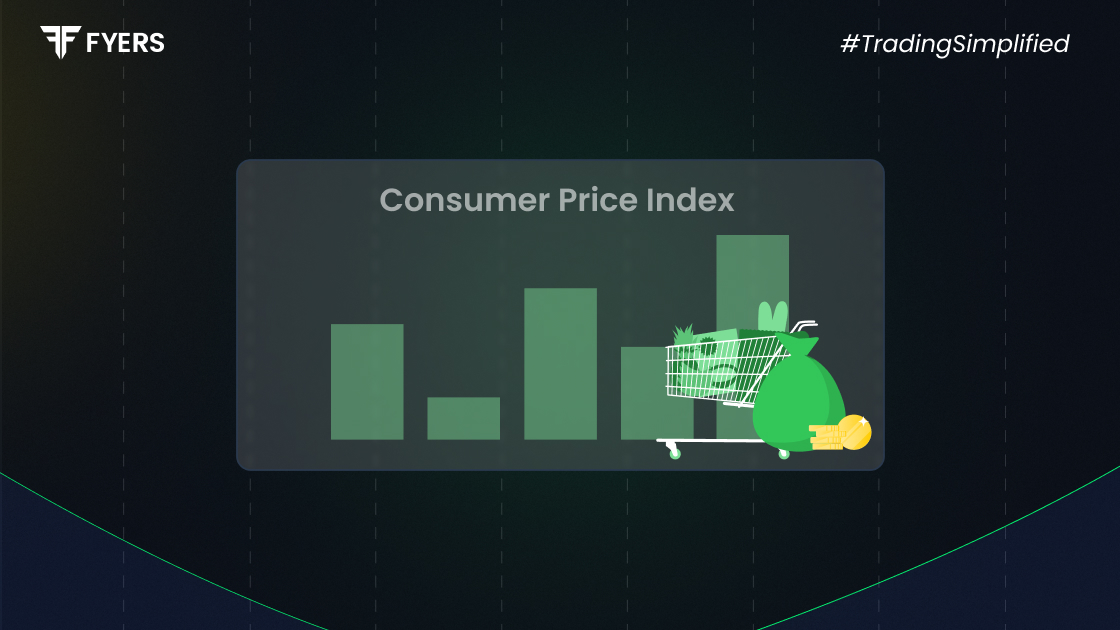

 8 Jul, 2025
8 Jul, 2025
 4 mins read
4 mins read

Understanding how prices shift over time is essential for every household, investor, and policymaker. One of the most critical tools to track this is the Consumer Price Index (CPI) - a key measure of inflation. Whether it’s the Reserve Bank of India adjusting interest rates or your employer deciding on salary hikes, CPI data in India plays a crucial role behind the scenes.
This blog will help you understand what is Consumer Price Index, how it’s calculated in India, its different types, and its real-world impact.
The Consumer Price Index is a metric that tracks the average change in prices paid by consumers for a fixed basket of goods and services over time. It reflects the cost of living and acts as a primary indicator of inflation.
In simple terms:
If the CPI rises, it means everyday essentials - like food, clothing, and fuel - are becoming more expensive. A rising CPI signals inflation, while a falling CPI may point to deflation or reduced demand.
The CPI has direct and widespread influence on India’s economy. Here's why it matters:
Monetary Policy: RBI bases key interest rate decisions on CPI trends.
Cost of Living: It reflects price changes in essential goods and services.
Salary & Pension Adjustments: Many organisations and government bodies use CPI as a benchmark for hikes.
Budgeting & Subsidy Planning: Helps governments allocate resources efficiently.
Investor Strategy: Inflation-sensitive investors use CPI data to adjust portfolios.
To understand how is CPI calculated in India, you must know that it’s based on a fixed basket of goods and services, priced across various locations. Categories in the basket include:
Food and beverages
Clothing and footwear
Housing
Fuel and light
Miscellaneous (healthcare, transport, education, etc.)
The Ministry of Statistics and Programme Implementation (MoSPI) collects price data monthly from urban and rural markets to compute CPI.
Here’s the basic CPI formula used for calculation:
| CPI = (Cost of Basket in Current Year ÷ Cost of Basket in Base Year) × 100 |
Example:
If the cost of a basket was ₹1,000 in the base year and ₹1,100 in the current year:
CPI = (1,100 ÷ 1,000) × 100 = 110
This means there's been a 10% increase in price levels since the base year.
There are four key types of CPI tracked and published in India:
CPI for Industrial Workers (CPI-IW):
Used for calculating dearness allowance for government employees.
CPI for Agricultural Labourers (CPI-AL):
Tracks inflation impact on agricultural labourers in rural India.
CPI for Rural Labourers (CPI-RL):
Measures inflation among rural workers not engaged in agriculture.
CPI (Combined):
The official headline inflation indicator used by the RBI. It reflects both urban and rural price levels.
Each type caters to a different economic group and is used in specific policy frameworks.
While CPI measures retail-level inflation, WPI (Wholesale Price Index) measures price changes at the producer or wholesale level.
|
Basis |
CPI |
WPI |
|---|---|---|
|
Measures |
Consumer prices |
Wholesale prices |
|
Includes |
Services and goods |
Only goods |
|
Scope |
Urban + Rural households |
Producers & wholesalers |
|
Frequency |
Monthly |
Monthly |
|
Base Year |
2012 (for CPI-Combined) |
2011–12 |
|
Usage |
RBI monetary policy, wages |
Cost trends for businesses |
The CPI vs. WPI comparison highlights that CPI is more relevant to everyday consumers.
Let’s take a simplified example:
Rice: ₹30/kg, Milk: ₹40/litre, Soap: ₹20 = ₹90 total
Rice: ₹36/kg, Milk: ₹50/litre, Soap: ₹24 = ₹110 total
CPI = (110 ÷ 90) × 100 = 122.2
This indicates a 22.2% rise in general price level since the base year.
Despite being widely used, CPI has some limitations:
Doesn’t Reflect Regional Differences: It gives a national average, not city or state-specific inflation.
Fixed Basket Bias: Consumption habits change, but the CPI basket may not be updated frequently.
Excludes Asset Prices: CPI doesn’t account for property, gold, or stock market prices.
Data Lag: CPI is released monthly, so it may not capture real-time changes.
Still, it remains the most relevant indicator for inflation and cost of living in India.
The Consumer Price Index is not just an economic term. It directly impacts your daily life, influencing your spending, salary, and savings. Understanding what CPI is, the different types, and how it is calculated can help you make smarter decisions, whether you are managing your monthly budget or investing in inflation-sensitive assets.
As inflation continues to shape government policies and personal finances, keeping track of CPI data in India has become more important than ever.
It tracks inflation and helps in policy-making, salary revisions, and budgeting.
It signals rising inflation, which may reduce purchasing power and lead to higher interest rates.
Higher CPI means increased expenses on essentials, impacting household budgets.
The Ministry of Statistics and Programme Implementation (MoSPI) publishes CPI monthly.
Calculate your Net P&L after deducting all the charges like Tax, Brokerage, etc.
Find your required margin.
Calculate the average price you paid for a stock and determine your total cost.
Estimate your investment growth. Calculate potential returns on one-time investments.
Forecast your investment returns. Understand potential growth with regular contributions.